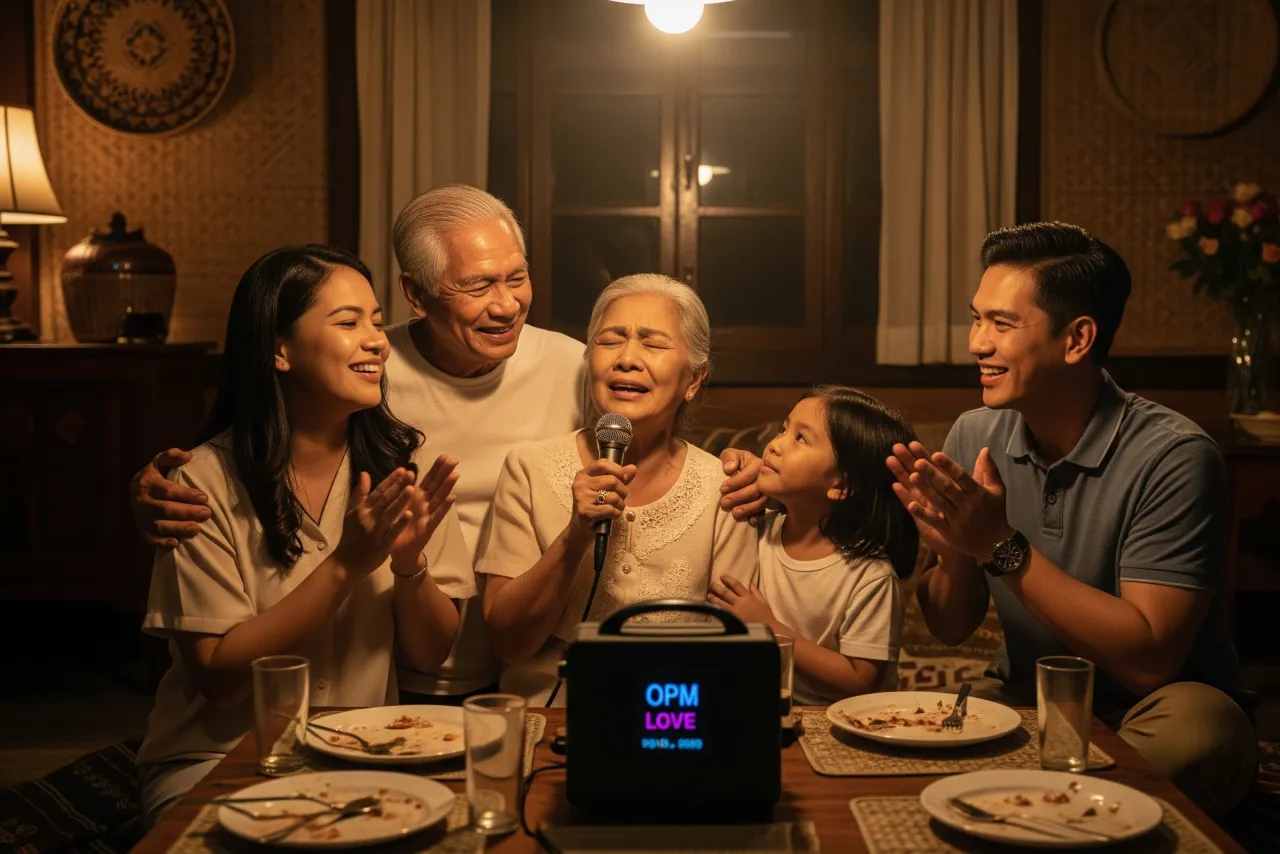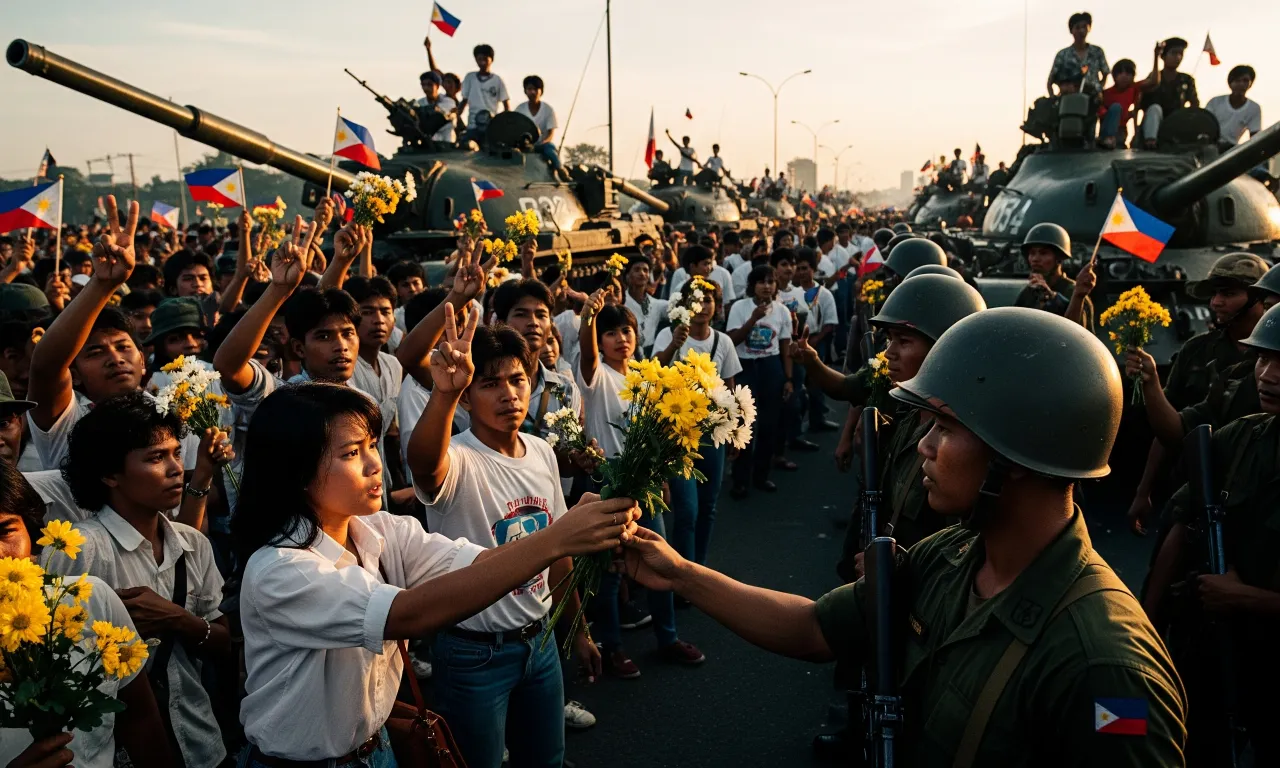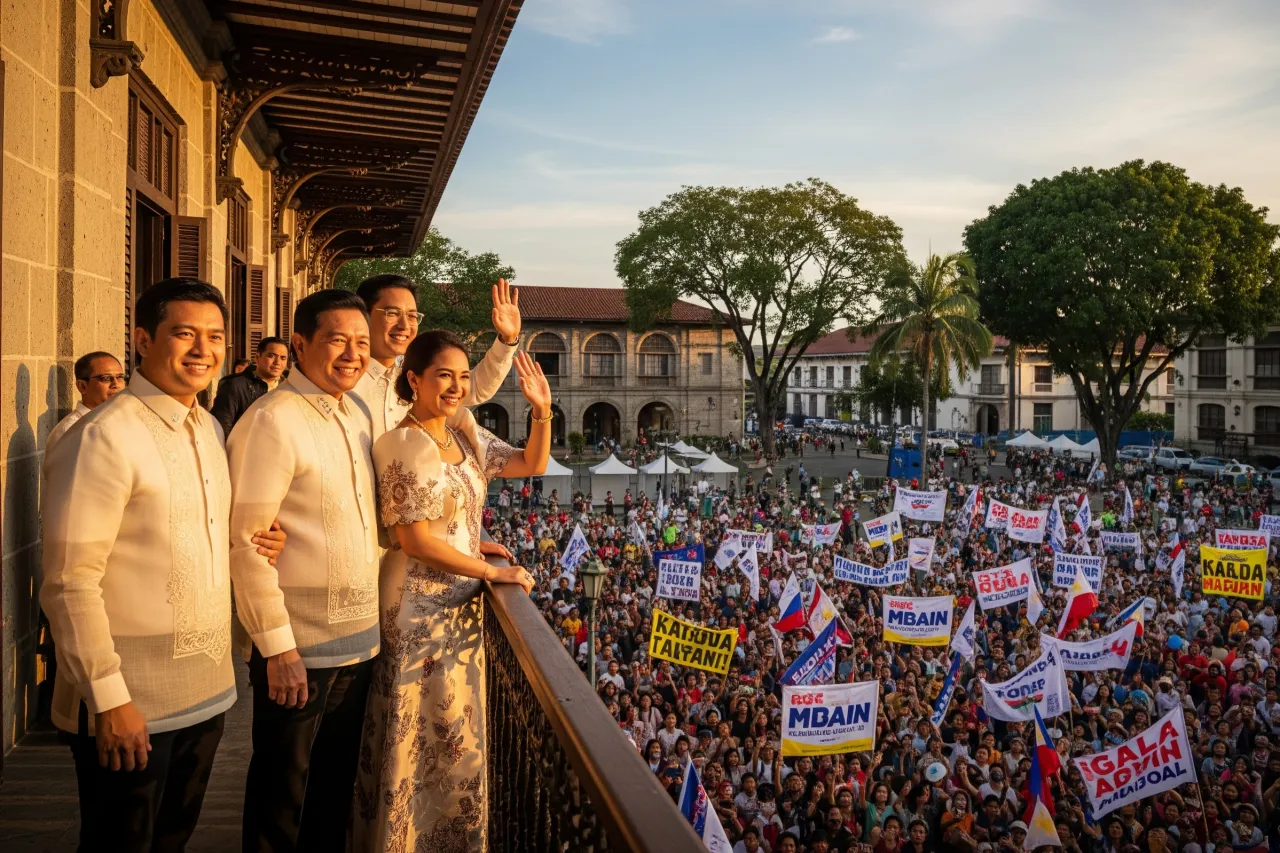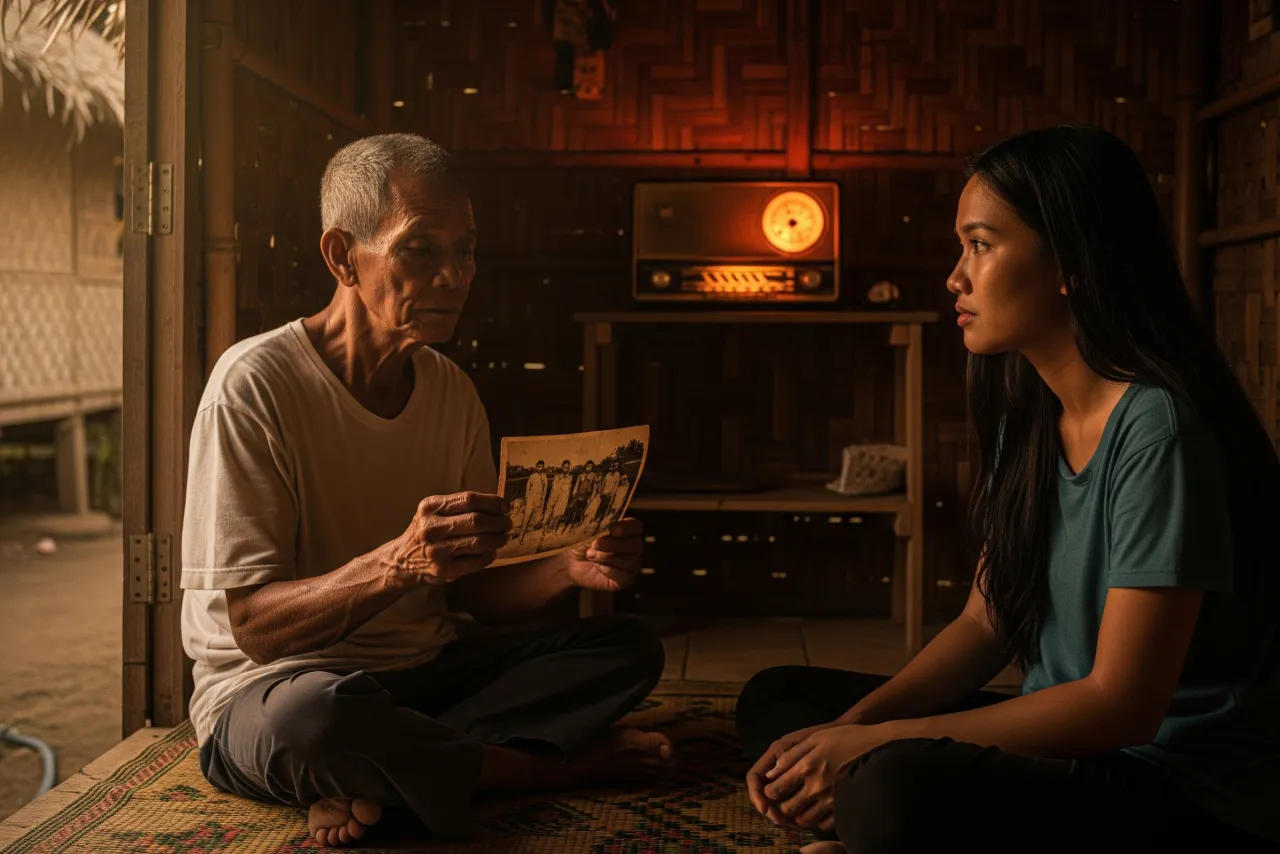The Unchanging Melody: Why Our Hearts Still Beat for Love Songs
A familiar melody drifts from a passing jeepney. A powerful ballad fills the air from a karaoke bar. On the radio, a soulful voice sings of heartbreak or undying devotion. For anyone living in or visiting the Philippines, the dominance of Original Pilipino Music (OPM) love songs is undeniable. They are the soundtrack to our lives: played at weddings, mourned over during breakups, and belted out with passion during family gatherings. This isn’t just a musical preference; it’s a profound cultural phenomenon. We witness this daily, from the bustling streets of Manila to the quiet towns of Isabela. This enduring presence makes us wonder: why do OPM love songs still dominate the airwaves?
- The Unchanging Melody: Why Our Hearts Still Beat for Love Songs
- 🎶 The Enduring Heartbeat: A Nation’s Love Affair with Love Songs
- 🎤 The Icons and Anthems: Voices That Defined Generations
- 📻 The Unseen Orchestrators: Radio, Streaming, and Karaoke
- 💔 The Unconquered Airwaves: Why Other Genres Struggle
- 🔮 The Future’s Melody: What Lies Ahead for OPM Ballads
- ❤️ Top 10 Most-Played OPM Love Songs of All Time
- 💔 Why Pinoy Can’t Get Enough of Heartbreak Anthems
- 🕰️ OPM Love Song Trends by Decade
- 🎧 Most-Streamed OPM Love Songs on Spotify PH
- 🤔 FAQs about OPM Love Songs
- The Final Melody: Music Mirrors the Filipino Heart
This isn’t a simple question of taste. It delves into the very soul of the Filipino people, exploring our history, our values, and our unique way of expressing emotion. While global music trends constantly shift, and new genres emerge, the ballad, particularly the OPM love song, remains an unshakeable pillar of our musical landscape. This article will journey through the historical roots of our love for these melodies, celebrate the iconic artists who shaped the genre, and examine the powerful platforms that keep these songs alive. We will also explore why other genres often struggle to achieve the same widespread affection and what the future holds for this beloved musical tradition.
🎶 The Enduring Heartbeat: A Nation’s Love Affair with Love Songs
The Filipino love affair with love songs is not a modern invention. It is a deep-seated cultural trait, woven into the very fabric of our history and traditions. Music has always been a primary language of emotion, a powerful medium through which we express our deepest feelings, from joy and longing to sorrow and devotion. This historical foundation has created fertile ground for the enduring dominance of OPM love songs.
Long before recording studios and radio waves, the harana (serenade) was a quintessential Filipino courtship ritual. A young man, often accompanied by friends and a guitar, would sing outside the window of the woman he admired. The songs were typically ballads, filled with poetic lyrics expressing admiration, longing, and a plea for affection. This tradition instilled in us a profound appreciation for music as a direct conduit for romantic expression. It taught generations that heartfelt emotions are best conveyed through song.
The kundiman, a traditional Filipino art song, further solidified this connection. Characterized by its melancholic melody and poignant lyrics, the kundiman often spoke of unrequited love, intense longing, and patriotic devotion. These songs, performed with deep emotion, became a powerful cultural touchstone, demonstrating the Filipino capacity for profound sentimentality and a preference for expressive, narrative-driven music. The kundiman laid the groundwork for the emotional depth that would later define the OPM love song.
This rich musical heritage, steeped in traditions of romantic expression and emotional storytelling, created a cultural predisposition for ballads. Filipinos are inherently sentimental, valuing deep emotional connections in relationships and family. Love songs, with their focus on personal feelings, relationships, and universal themes of the heart, resonate deeply with this cultural inclination. They provide a powerful outlet for shared experiences of love, heartbreak, and hope. This enduring connection to music as a language of the heart explains why OPM love songs continue to hold such an unparalleled grip on the Filipino psyche.
🎤 The Icons and Anthems: Voices That Defined Generations
The enduring popularity of OPM love songs is inextricably linked to the iconic artists who have masterfully delivered these anthems of the heart. Their powerful voices, emotional interpretations, and relatable narratives have not only defined generations but have also cemented the genre’s place in the Filipino consciousness. These artists are more than just singers; they are cultural touchstones, their songs woven into the fabric of our collective memory.
Gary Valenciano, often hailed as “Mr. Pure Energy,” is a prime example. While known for his energetic performances, his ballads are equally iconic. Songs like “Sana Maulit Muli” and “Warrior is a Child” showcase his incredible vocal range and his ability to infuse every note with raw emotion. His heartfelt delivery makes his love songs resonate deeply, whether they speak of longing, hope, or enduring love. Gary V’s sincerity and powerful voice have made his ballads timeless.
Regine Velasquez, the “Asia’s Songbird,” commands unparalleled respect for her vocal prowess and her unparalleled ability to interpret a song with profound emotion. Her rendition of “Dadalhin” or “Pangako” transforms simple lyrics into a soaring expression of love and commitment. Regine’s technical brilliance combined with her emotional depth has made her the definitive voice for many OPM love songs, setting a high standard for vocal performance in the genre. Her influence is undeniable, inspiring countless aspiring singers.
In more recent times, Moira Dela Torre has emerged as the voice of a new generation’s heartbreak and quiet introspection. Her acoustic-driven, emotionally raw ballads like “Malaya” and “Tagpuan” resonate deeply with millennials and Gen Z. Her simple, relatable lyrics and vulnerable delivery capture the complexities of modern love and loss, making her songs incredibly popular on streaming platforms. Moira’s authenticity has made her a powerful voice for contemporary OPM love songs.
Beyond these giants, numerous other artists have contributed to the rich tapestry of OPM ballads. Basil Valdez with his classic “Ngayon at Kailanman,” Sharon Cuneta with her powerful renditions, and the evergreen Jose Mari Chan whose Christmas songs and love ballads like “Please Be Careful With My Heart” become annual anthems. More contemporary artists like Sarah Geronimo, Julie Anne San Jose, and Christian Bautista continue to carry the torch, ensuring that the OPM love song remains vibrant and relevant across different eras. Their collective talent and dedication have ensured that the Filipino heart always has a melody to express its deepest affections.
📻 The Unseen Orchestrators: Radio, Streaming, and Karaoke
The enduring presence of OPM love songs isn’t solely due to their emotional depth or the talent of their artists. Powerful platforms act as unseen orchestrators, consistently keeping these melodies in our ears, reinforcing their dominance across generations and different listening habits. These mediums ensure that the heartbeat of OPM love songs continues to pulse through our daily lives.
Radio remains a traditional stronghold for OPM love songs. Despite the rise of digital platforms, terrestrial radio stations across the Philippines, from bustling Manila to a quiet town in Mindoro, continue to heavily feature ballads. Morning and evening commutes are often accompanied by a steady stream of OPM love songs, providing a familiar and comforting soundtrack. Radio DJs often receive numerous requests for these timeless tunes, cementing their consistent airplay. This traditional medium acts as a constant reminder of the genre’s omnipresence.
Streaming platforms like Spotify, Apple Music, and YouTube have given OPM love songs a new lease on life, reaching a global audience and enabling endless repeat listens. Users curate playlists filled with their favorite ballads, and algorithms often recommend similar songs, creating a continuous loop of emotional melodies. The accessibility of streaming means a favorite love song is always just a tap away, fostering a culture of constant engagement with the genre. Artists like Moira Dela Torre have found massive success through streaming, proving its power in propelling OPM ballads to new heights.
Perhaps the most potent platform for keeping OPM love songs alive is karaoke. It is a national pastime, a beloved ritual in every Filipino gathering, from birthday parties to simple weekend get-togethers. The karaoke machine, whether a high-tech system or a simple setup, becomes a stage for emotional release. Filipinos belt out ballads with unparalleled passion, transforming personal heartbreak or joy into a communal experience. Songs like “My Way” (despite its controversial reputation) and numerous OPM ballads are perennial favorites, providing a cathartic outlet for emotions. Karaoke reinforces the lyrics and melodies in our minds, making these songs deeply ingrained in our collective consciousness. These platforms, collectively, create a powerful ecosystem that ensures OPM love songs remain not just popular, but truly dominant.
💔 The Unconquered Airwaves: Why Other Genres Struggle
While the Filipino music scene is vibrant and diverse, with flourishing genres like hip-hop, indie, and P-Pop, none have yet managed to achieve the same widespread, consistent dominance as OPM love songs. This isn’t a reflection of a lack of talent or quality in other genres, but rather a complex interplay of cultural preferences, market demand, and industry investment that consistently favors the ballad.
The primary reason lies in emotional resonance. Filipinos are inherently sentimental and value deep emotional connections in their relationships, family, and even their national identity. Love songs, with their focus on personal feelings, heartbreak, longing, and devotion, tap directly into this core cultural trait. They provide a powerful and relatable outlet for emotions that are often difficult to articulate in everyday conversation. Other genres, while offering different forms of expression, may not connect with the Filipino heart on the same profound, universal level.
Secondly, relatability plays a crucial role. The lyrical themes of OPM love songs often mirror common Filipino experiences of love, family dynamics, sacrifice, and resilience. A song about a long-distance relationship, a broken promise, or enduring love despite challenges resonates deeply because it reflects a shared reality for many. While hip-hop might speak to social issues and P-Pop to aspirational dreams, the raw, universal emotions of love and heartbreak remain the most accessible and widely understood.
Finally, market demand and industry investment reinforce this dominance. Because OPM love songs consistently sell, get airplay, and are popular in karaoke, record labels and producers naturally gravitate towards investing more in artists and songs within this genre. It’s a self-fulfilling prophecy: the market demands love songs, so the industry supplies them, further solidifying their presence. While genres like P-Pop are gaining significant traction, particularly among younger audiences, they still face the challenge of breaking through the deeply entrenched cultural preference for ballads that has been cultivated over centuries. The airwaves remain unconquered by other genres because the Filipino heart, it seems, has a perpetual soft spot for a good love song.
🔮 The Future’s Melody: What Lies Ahead for OPM Ballads
The landscape of music is ever-changing, and even the most dominant genres must adapt to survive and thrive. For OPM ballads, the future promises both continuity and evolution, as new artists and technologies shape their trajectory. While their fundamental appeal is unlikely to wane, the way they are created, consumed, and marketed will undoubtedly transform.
One significant aspect of their future will be modern production and sound. While the emotional core will remain, contemporary OPM love songs will continue to incorporate global sounds, electronic elements, and diverse instrumentation. This fusion will keep the genre fresh and appealing to younger audiences who are exposed to a wider range of music through streaming. Artists will experiment with new vocal styles and arrangements, pushing the boundaries of the traditional ballad while retaining its emotional essence. Furthermore, new lyrical themes might emerge. While classic themes of love and heartbreak will persist, OPM love songs may increasingly explore modern relationship complexities, digital-age romance, and the nuances of self-love and mental well-being, reflecting the evolving experiences of Filipinos.
The role of streaming platforms will become even more critical. Personalized playlists and algorithmic recommendations will continue to expose new listeners to OPM ballads, ensuring their discoverability. The global reach of these platforms also offers opportunities for OPM love songs to transcend national borders, potentially finding new audiences in the Filipino diaspora and beyond. However, challenges from other genres, particularly the rapidly growing P-Pop, will intensify. While P-Pop might not entirely overtake the ballad’s dominance, it will undoubtedly carve out a larger share of the mainstream, creating a more diverse and competitive OPM landscape. The future of OPM ballads, therefore, is not one of stagnation, but of dynamic adaptation, ensuring that the Filipino heart will always have a powerful melody to express its deepest affections.
❤️ Top 10 Most-Played OPM Love Songs of All Time
- “Sana Maulit Muli” – Gary Valenciano
- “Pangako” – Regine Velasquez
- “Ngayon at Kailanman” – Basil Valdez
- “Kahit Isang Saglit” – Martin Nievera
- “Hanggang Kailan” – Orange and Lemons
- “Huwag Ka Nang Umiyak” – Gary Valenciano (originally by Sugarfree)
- “Tagpuan” – Moira Dela Torre
- “Forevermore” – Side A
- “Dadalhin” – Regine Velasquez
- “Para Sa Akin” – Sitti
💔 Why Pinoy Can’t Get Enough of Heartbreak Anthems
- Emotional Catharsis: Heartbreak anthems provide a powerful outlet for processing pain, sadness, and longing. Singing along allows for emotional release.
- Universal Relatability: The themes of lost love, longing, and moving on are universal human experiences that resonate deeply with everyone, regardless of age or background.
- Cultural Sentimentality: Filipinos are inherently sentimental and expressive. Heartbreak anthems tap into this cultural trait, providing a shared space for emotional vulnerability.
- Karaoke Culture: The popularity of karaoke provides a public, yet safe, platform for Filipinos to belt out these emotional songs, turning personal pain into a communal performance.
- Narrative Power: Many heartbreak anthems tell compelling stories of love and loss, which Filipinos, as natural storytellers and listeners, find incredibly engaging and relatable.
🕰️ OPM Love Song Trends by Decade
🎧 Most-Streamed OPM Love Songs on Spotify PH
This table provides a fictionalized snapshot of the most-streamed OPM love songs on Spotify Philippines, reflecting the immense popularity of these tracks on digital platforms.
🤔 FAQs about OPM Love Songs
Q1: Do love songs sell more than other genres in the Philippines? A: Historically, yes. OPM love songs and ballads have consistently been top sellers and highly streamed tracks due to their widespread appeal and emotional resonance with the Filipino audience. This trend continues in the digital age.
Q2: Will rap or indie music ever overtake OPM ballads in popularity? A: While rap and indie music are rapidly growing and gaining significant traction, especially among younger demographics, it is unlikely they will completely overtake the deep-seated dominance of OPM ballads in the foreseeable future. They will likely continue to thrive alongside, creating a more diverse music landscape.
Q3: Why are OPM love songs so popular in karaoke? A: OPM love songs are popular in karaoke because their emotional lyrics and often dramatic melodies provide a cathartic outlet for singers. They are also widely known, making them easy for everyone to sing along to, fostering a communal experience.
Q4: How has streaming affected the popularity of older OPM love songs? A: Streaming platforms have given older OPM love songs a new lease on life. They are easily discoverable by new generations, and curated playlists often include both classic and contemporary ballads, ensuring their continued relevance and popularity.
Q5: Are there specific themes that make OPM love songs resonate more with Filipinos? A: Yes. Themes of sacrifice for love, enduring commitment, longing for someone far away (especially relevant for OFWs), unrequited love, and the pain of heartbreak resonate deeply with the sentimental and family-oriented Filipino culture.
Q6: What role do love teams play in the success of OPM love songs? A: Love teams often have theme songs or perform duets that become immensely popular, leveraging their on-screen chemistry to boost the song’s emotional appeal and widespread recognition among their fans.
Q7: Is there a difference in how older and younger generations consume OPM love songs? A: Older generations might prefer traditional radio and live performances, while younger generations heavily utilize streaming platforms and social media (like TikTok) to discover and share OPM love songs. However, the emotional connection to the genre remains strong across all ages.
Q8: How do OPM love songs contribute to Filipino identity? A: OPM love songs are a significant part of Filipino cultural identity. They reflect our collective experiences of love, family, and resilience, providing a shared musical language that unites people across different regions and backgrounds.
Q9: Are OPM love songs gaining international recognition? A: While some OPM artists and songs have gained international traction, particularly within the Filipino diaspora, OPM love songs generally have not achieved the same global mainstream success as genres like K-Pop. However, streaming platforms are slowly expanding their reach.
Q10: Will the rise of P-Pop affect the future of OPM love songs? A: P-Pop is creating a new wave of Filipino music, and while it brings diverse sounds, many P-Pop groups also release ballads. The two genres will likely co-exist and influence each other, contributing to a richer and more varied OPM landscape.
The Final Melody: Music Mirrors the Filipino Heart
The story of OPM love songs is more than just a genre’s enduring popularity; it is a profound reflection of the Filipino heart. From the ancient tradition of harana to the modern-day heartbreak anthems streamed globally, our music has always been a powerful language of emotion, connection, and resilience. It is a testament to our inherent sentimentality, our deep value for relationships, and our unwavering ability to find beauty and catharsis in melody and lyrics.
So, the next time you hear a soulful OPM love song on the airwaves, at a karaoke session, or on your favorite streaming playlist, remember that it’s more than just a tune. It’s the heartbeat of a nation, a cultural thread that binds us together, and a timeless expression of the universal human experience of love. The OPM love song, my friend, will always find a way to dominate, because it sings the very song of who we are.
References
[1] National Commission for Culture and the Arts (NCCA). (2023). The Evolution of Filipino Music: From Kundiman to Contemporary OPM.
[2] University of the Philippines Center for Ethnomusicology. (2024). The Cultural Significance of Harana and Kundiman.
[3] Spotify Philippines. (2024). Annual Streaming Trends Report: OPM Insights.
[4] Reyes, L. (2025). “The Karaoke Phenomenon: How Singing Unites the Filipino Nation.” Filipino Culture Magazine, 10(1), 5-15.
[5] Lopez, F. (2024, November). “Moira Dela Torre: The Voice of a Generation’s Heartbreak.” Music Today PH.
[6] Asia’s Songbird Official Website. (Various biographies and discographies of Regine Velasquez).
[7] Mr. Pure Energy Official Website. (Various biographies and discographies of Gary Valenciano).
[8] Philippine Association of the Record Industry (PARI). (2024). Philippine Music Industry Report.
[9] Rappler. (Various articles on OPM trends and artists).
[10] The Philippine Star. (Various articles on music and culture).




